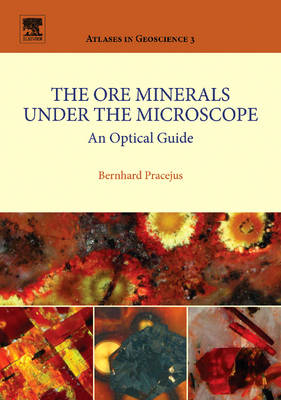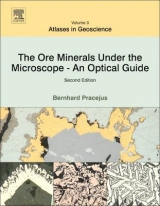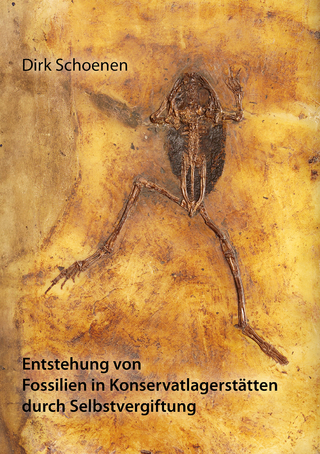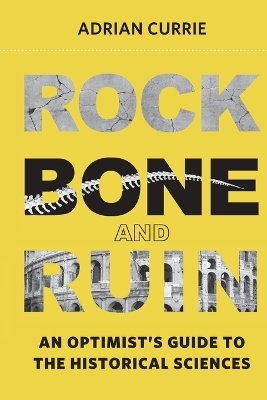
The Ore Minerals Under the Microscope
Elsevier Science Ltd (Verlag)
978-0-444-52863-6 (ISBN)
- Titel erscheint in neuer Auflage
- Artikel merken
This is a very detailed colour atlas for ore/opaque minerals (ore microscopy) with the main emphasis on name and synonyms, mineral group, chemical composition, information about major formation environment, optical data, reflection colour/shade comparison with 4 common/standard minerals of a similar colour or grey shade, up to 5 high-quality photos for each mineral with scale, and a short description of the pictures. A compilation from some of the prominent publications in the field of ore microscopy yielded a list of 431 minerals are included in this atlas.
Dr. Bernhard Pracejus currently works as Associate Professor at the Earth Science Department, Sultan Qaboos University, Sultanate of Oman. He is specialised in Mineralogy, Geochemistry, and Economic Geology and his research concentrates on topics such as the alteration of geologic bodies over time (particularly metal deposits), environmentally friendly remediation of heavy metal polluted effluents and solid wastes from mining activities and other industries, and processes at the Bio-Geo-Interface. He has published various articles in journals such as Ore Geology Reviews, Marine Geology, and Chemical Geology.
Acknowledgements and Sample Sources. Instrument Settings. Preface. Mineral Description. Explanations and Abbreviations. I Elements. A. Metallic and Intermetallic Compounds, Carbides, Nitrides, Phosphides and Silicides. B. Semimetals and Nonmetals.II. Sulfides and Sulphosalts. A. Alloys and Alloy-like Compounds, with Copper, Silver, Gold and Nickel. B. Sulfides with Metal: Sulfur, Selenium and Tellurium > 1:1. C. Sulfides with Metal: Sulfur, Selenium and Tellurium = 1:1. D. Sulfides with Metal: Sulfur, Selenium and Tellurium < 1:1, Tellurides with Copper, Silver and Gold. E. Sulfosalts (S : As,Sb,BI = x), Sulfosalts with Predominant Iron and Copper x = 2.0. F. Sulfides with Nonmetallic Properties, Arsenic-Sulfides. X. Unclassified Strunz Sulfides and Sulphosalts. III. Halogenides. A. Simple Halogenides, without Water Metal : Halogen = 1: 1. B. D-Oxihalogenides with Mg-Mn-Cu-Zn-Sn. IV. Oxides. A. Oxides with Metal : Oxygen = 1:1 and 2:1 (N2O, MO). B. Oxides with Metal : Oxygen = 3:4 (Spinel type M3O4 and related), Aluminat-Spinels. C. Oxides with Metal : Oxygen = 2:3 (M2O3 and related compounds). D. Oxides with Metal: Oxygen = 1:2 (MO2 and related compounds). E. Oxides with Metal : Oxygen < 1:2 (M2O5, MO3). F. Hydroxides and oxidic hydrates, water bearing Oxides with Layered Structure. G. Vanadiumoxides (with V4+/5+), Group-vanadates. K. Sulfides, Selenides, Tellurides with [XO3}2- groups and related structures. V. Nitratesm Carbonates and Borates. B. Waterfree carbonates {CO3}2- without unfamiliar anions. C. Waterfree carbonates with unfamiliar anions. G. "Insel" Borates {BO3}3- "inseln". VI. Sulfates, Chromates, Molybdates and Tungstates. A. Waterfree sulfates [SO4]2- without unfamiliar Anions, Cations of Medium Size. B. Waterfree sulfates [SO4]2- with Unfamiliar Anions. Cations of Medium Size. C. Water bearing sulfates without unfamiliar Anions. Cations of Medium Size. F. Chromates [CrO4]2-. G. Molybdates [MoO4]2- and Wolframates [WO4]2-. VII Phosphates, Arsenates and Vanadates. A. Waterfree phosphates [PO4]3- without unfamiliar anions, cations of small size: Li, Be, Al. B. Waterfree phosphates with unfamiliar anions F, Cl, O, OH, cations of very small size: Li, Be. C. Waterfree phosphates without unfamiliar anions. Cations of medium and small size: Be and Mn, Fe, Cu, Zn, Mg. VII. Silicates. A. Nesosilicates, with [SiO4]4- groups, cations of tetrahedric orientation [4]. B. Nesosubsilicates, with anions unfamiliar to tetraheders, cations of octahedral and tetrahedral orientation [4/6]. C. Sorosilicates, with [Si2O7]6-, without anions unfamiliar to tetraheders. E. Cyklosilicates, Triplet Rings [Si3O9]6-. F. Inosilicates (Chain and Band) Double Chains [Si2O6]4-. H. Phyllosilicates (Layered), Tetragonal or pseudotetragonal layered structures [Si4O10]4- and others. Bibliography/Print Media, Bibliography/Electronic Media, Index.
| Erscheint lt. Verlag | 2.10.2008 |
|---|---|
| Reihe/Serie | Atlases in Geoscience |
| Verlagsort | Oxford |
| Sprache | englisch |
| Maße | 210 x 297 mm |
| Gewicht | 2720 g |
| Themenwelt | Naturwissenschaften ► Geowissenschaften ► Mineralogie / Paläontologie |
| ISBN-10 | 0-444-52863-6 / 0444528636 |
| ISBN-13 | 978-0-444-52863-6 / 9780444528636 |
| Zustand | Neuware |
| Haben Sie eine Frage zum Produkt? |
aus dem Bereich



